冬至 touji
日本には、はじまりの節目が多くあります。もうすぐやってくるお正月の元旦。旧暦のはじまりは立春。そして『ゑなの結』のはじまりは冬至です。冬至は一年で最も日が短い日で、冬至を過ぎると少ずつ日が長くなっていきます。古くから世界各地で冬至の祝祭が盛大に行われ、冬至が暦の上では始まりを意味することもあります。「一陽来復(いちようらいふく)」といって、冬至は万物がよみがえる日という意味。太陽の位置が一年で最も高くなる夏至の頃と比べると、恵那山麓では昼間の時間が四時間ほどの差があるようです。
冬至には「ん」のつくものを食べると運が呼びこめるといわれています。にんじん、だいこん、れんこん、うどん、ぎんなん、きんかんなど「ん」のつくものを運盛りといい、縁起をかついでいたのです。運盛りは縁起かつぎだけでなく、栄養をつけて寒い冬を乗りきるための知恵。また、いろはにほへとが「ん」で終わることから、「ん」には一陽来復の願いが込められているのです。
Japan has many milestones in the beginning. New Year’s Day is just around the corner. The beginning of the lunar calendar is Risshun. And the beginning of “Enano no Yui” is the winter solstice. The winter solstice is the shortest day of the year, and after the winter solstice, the days gradually lengthen. Since ancient times, the winter solstice has been celebrated in many parts of the world, and the winter solstice can also mean the beginning of the calendar on the calendar. The winter solstice means the day when all things are resurrected. Compared to the summer solstice, when the sun is at its highest position of the year, there seems to be a difference of about four hours in the daytime at the foot of Mt. Ena.
It is said that eating something with a “n” on the winter solstice will bring good luck. Carrots, radishes, lotus roots, udon noodles, ginnan, kinkan, and other foods with a “n” were called luck, and they were used to bring good luck. Luck is not only good luck, but also wisdom to nourish and survive the cold winter. In addition, since Iroha ni hohe ends with “n”, the “n” contains a wish for the return of Ichiyo.
おせち料理
この時期になると、地域の伝統料理“年取りのごっつぉう”や、お正月のおせち料理の準備にいそいそとする時期ではないでしょうか。長國寺にて開催された藤井まり先生が伝える「身土不二(しんどふじ)」には、生まれ育った土地柄と季節に合ったものを食べようという精神があります。冬なら根菜類がからだを温めてくれ、夏なら瓜系の野菜は熱を冷ましてくれます。
教えていただいた九種類のおせち料理も旬の野菜がつかわれます。冬至に食べるもと運が呼びこめる材料が入る「炒めなます(吹き寄せ)」は人参、蓮根、銀杏などが入り、私たちがこの地を想うことと、季節の料理の繋がりをまた一つ習うことができました。
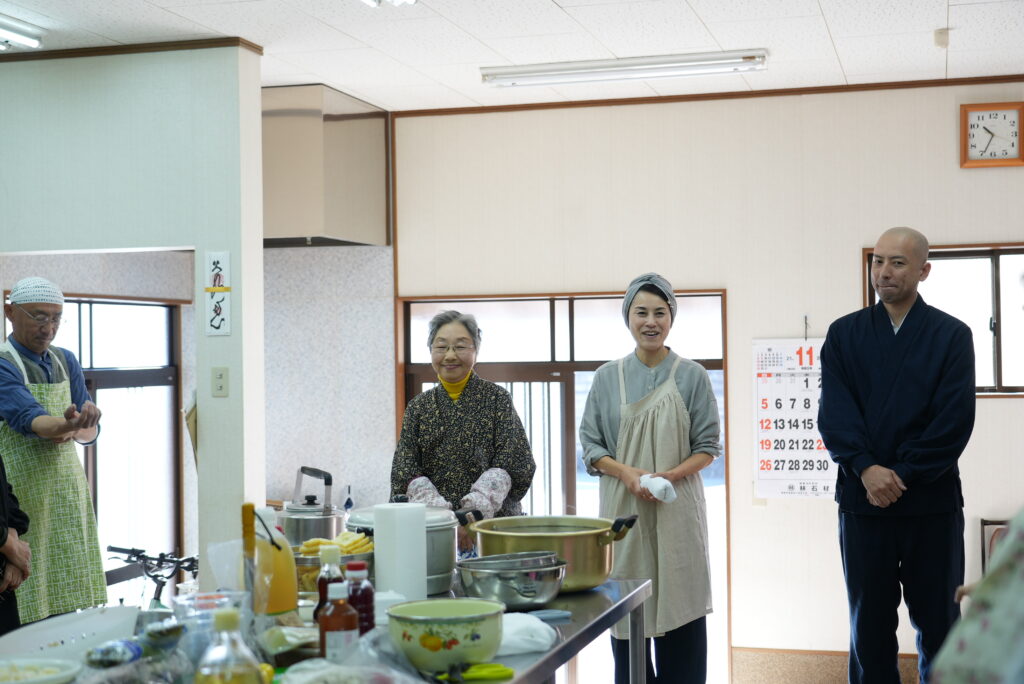
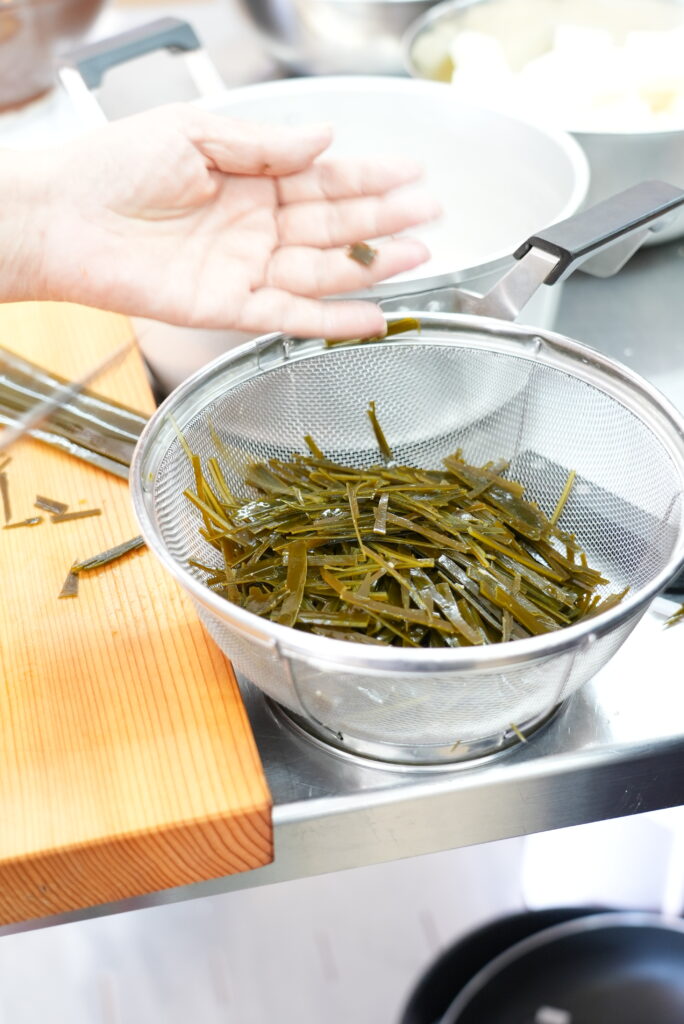
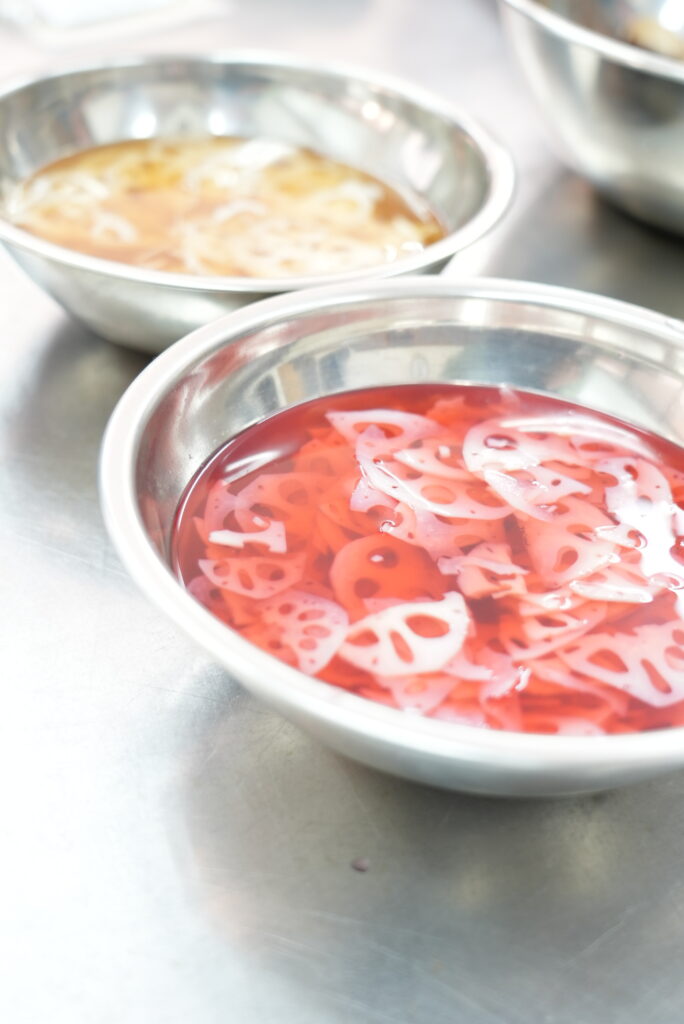
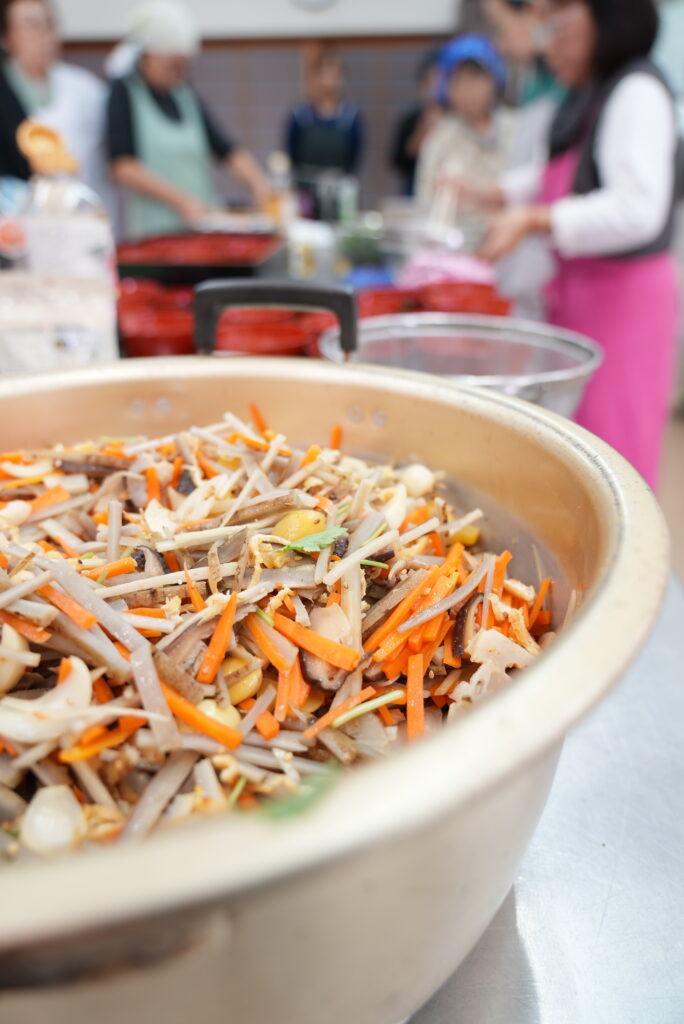
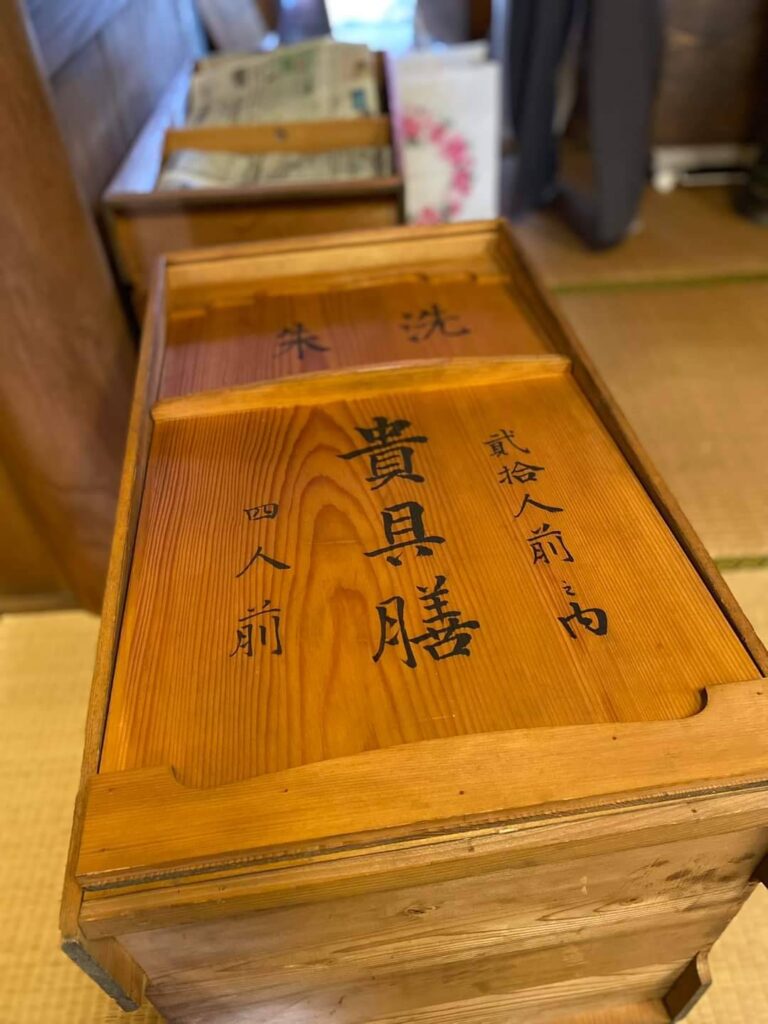
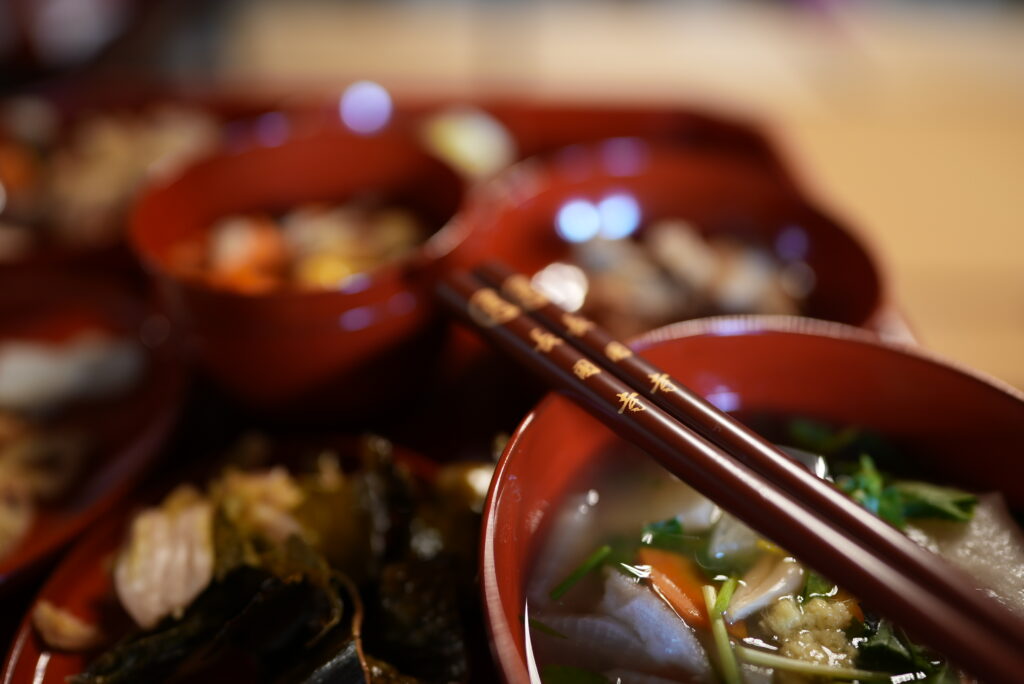
今年のおせち料理が楽しみです。おせち料理の「壱の重」はふたを開けたときの華やかさも大事にしたいもの。みなさんのご家庭には、お雑煮は家独特のレシピがありますか?わたしも、「喜心」「身土不二」「発酵」を取り入れて新年を迎えたいと思います。
At this time of year, it is a time to rush to prepare the traditional local dish “Old Year’s Gotsu” and New Year’s New Year’s New Year’s dishes. The “Shindo Fuji“ conveyed by Mari Fujii at Chokokuji Temple has the spirit of eating food that suits the place where you were born and raised and the season. In winter, root vegetables warm the body, and in summer, melon-based vegetables cool the heat.
The nine kinds of osechi dishes that I was taught also use seasonal vegetables. The “stir-fried namasu” (blow-inhua), which contains ingredients that can bring good luck to eat on the winter solstice, includes carrots, lotus roots, ginkgo, etc., and we were able to learn another connection between our thoughts on this place and seasonal dishes.
I’m looking forward to this year’s New Year’s dishes. The “Ichi no Shige” of osechi cuisine is also something that you want to cherish when you open the lid. Does your family have a recipe for ozoni that is unique to your home? I, too, would like to welcome the new year with the incorporation of “joy,” “self-inflictedness,” and “fermentation.”
ゑなの結とは
私たちは恵那山のふもとでフリーペーパーを発行している任意団体です。本当の意味で“誰一人取り残されない”のは季節の移り変わりではないでしょうか。また美しい自然から、地域の強みや魅力を教えられているのは、私たちだとも感じています。
心を豊かにするこの地域のひとときを二十四節氣とともに発信。そしてこの地のスタートアップから、インタビューや寄稿を通したコンテンツは、恵那山の頂きより「ヤッホー!」と叫ぶように、多くの人々に届いたらいいなと思っています。
We are a voluntary organization that publishes free papers at the foot of Mt. Ena. Isn't it the change of seasons that truly means that no one is left behind? I also feel that we are the ones who are taught the strengths and charms of the region by the beautiful nature.
We will transmit a moment of this region that enriches the mind with 24 seasons. And I hope that the content through interviews and contributions from startups in this area will reach as many people as possible like shouting "Yo-ho!" from the top of Mt. Ena.
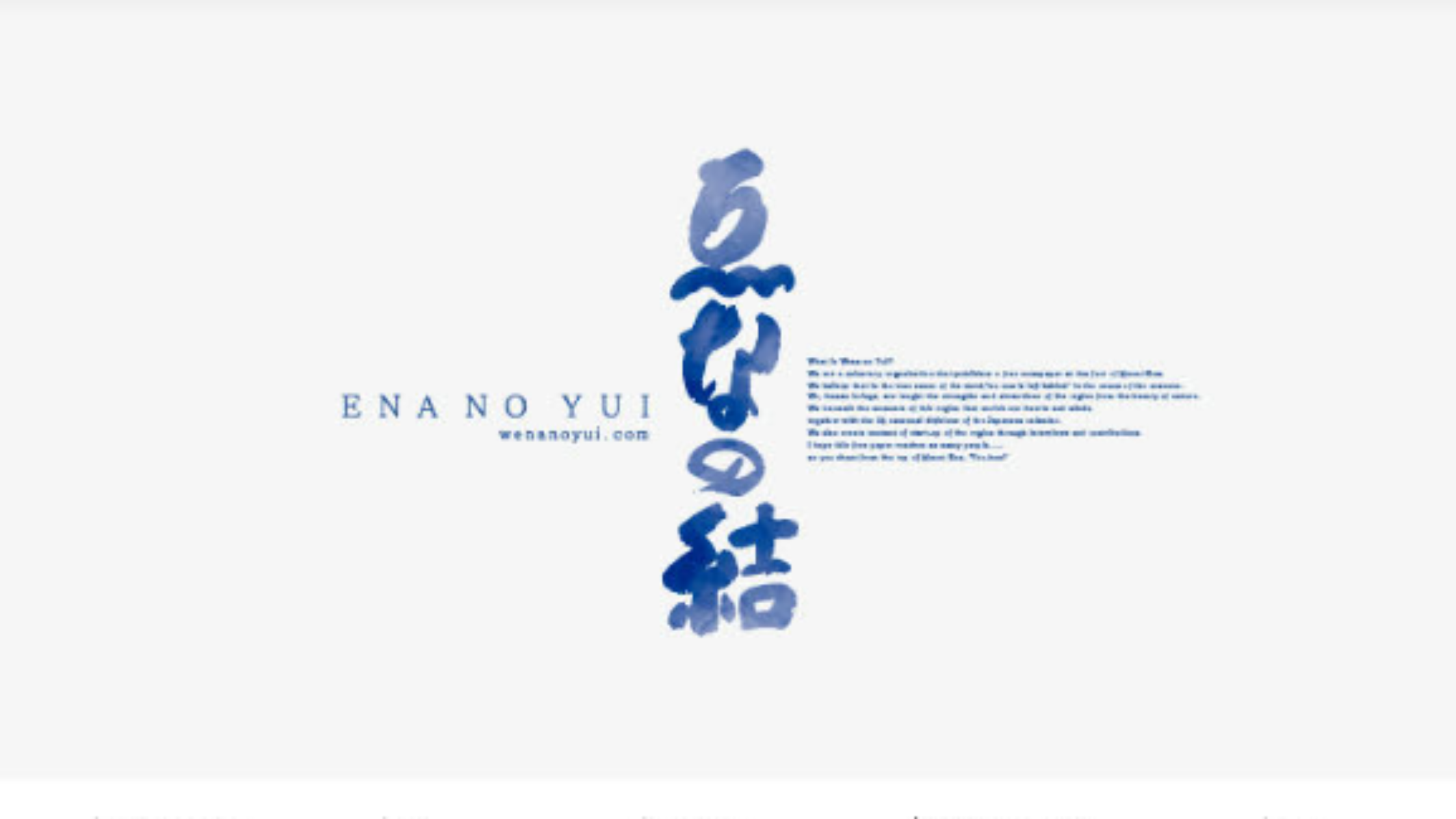



コメント